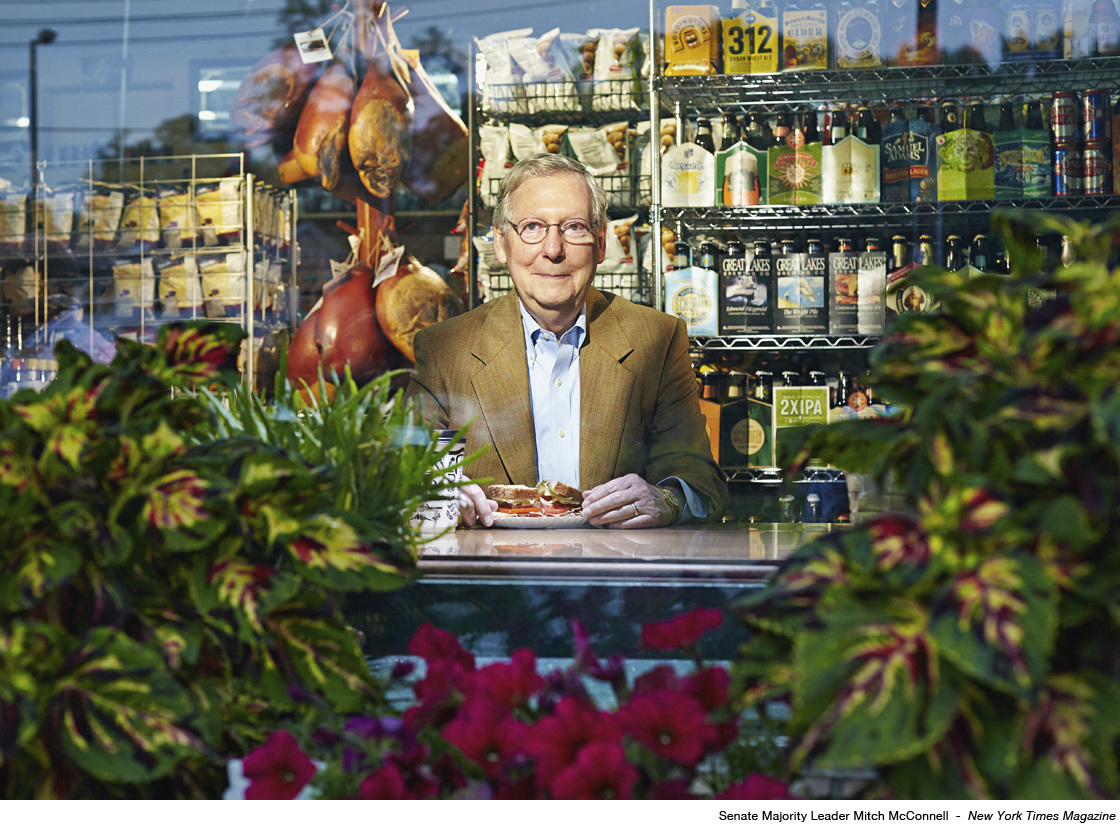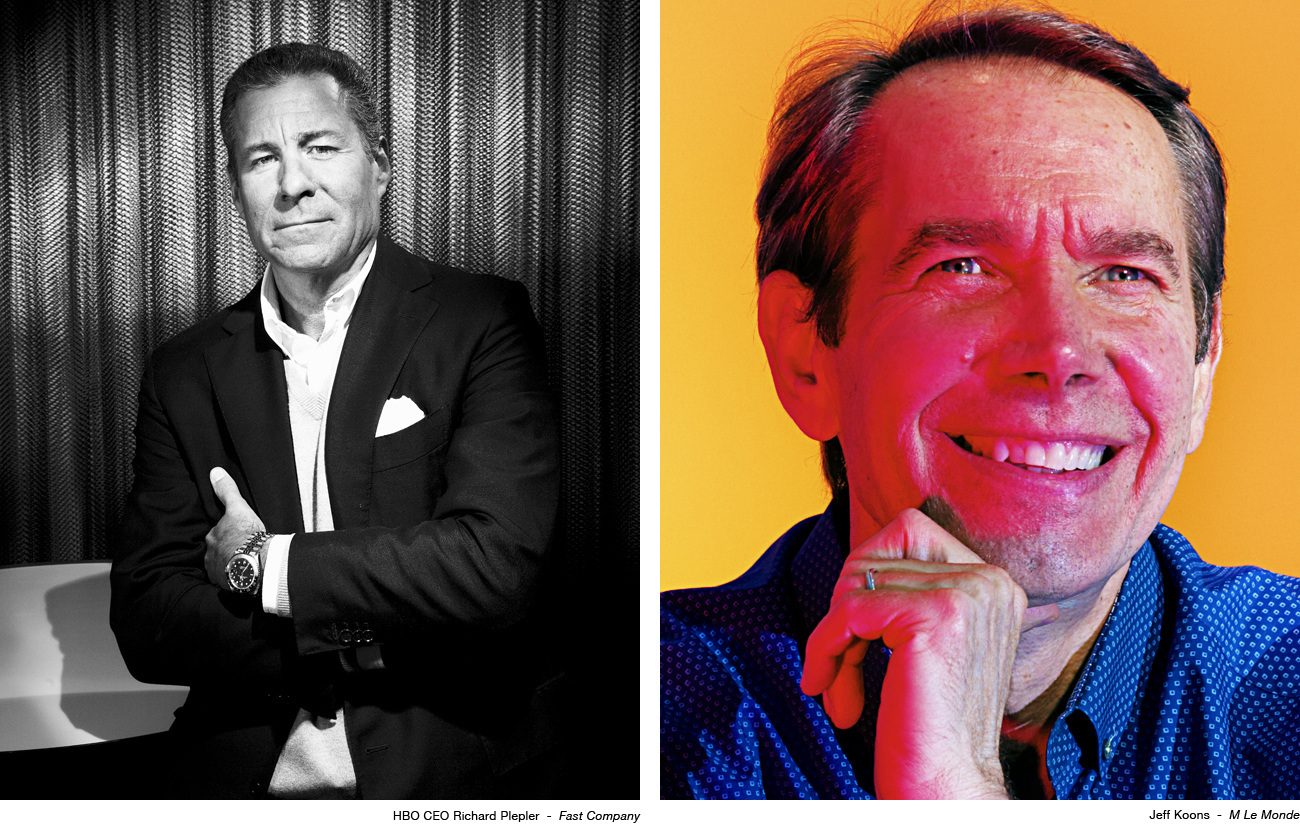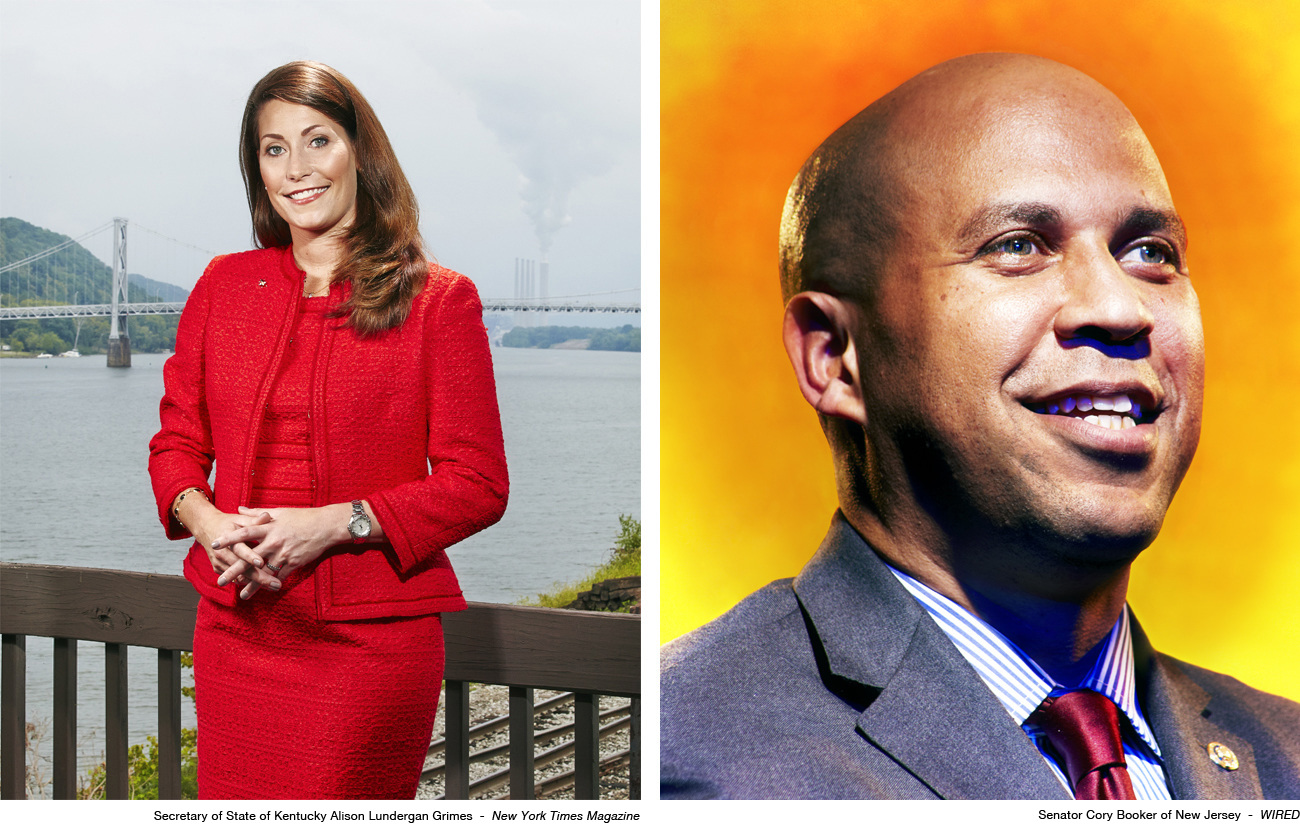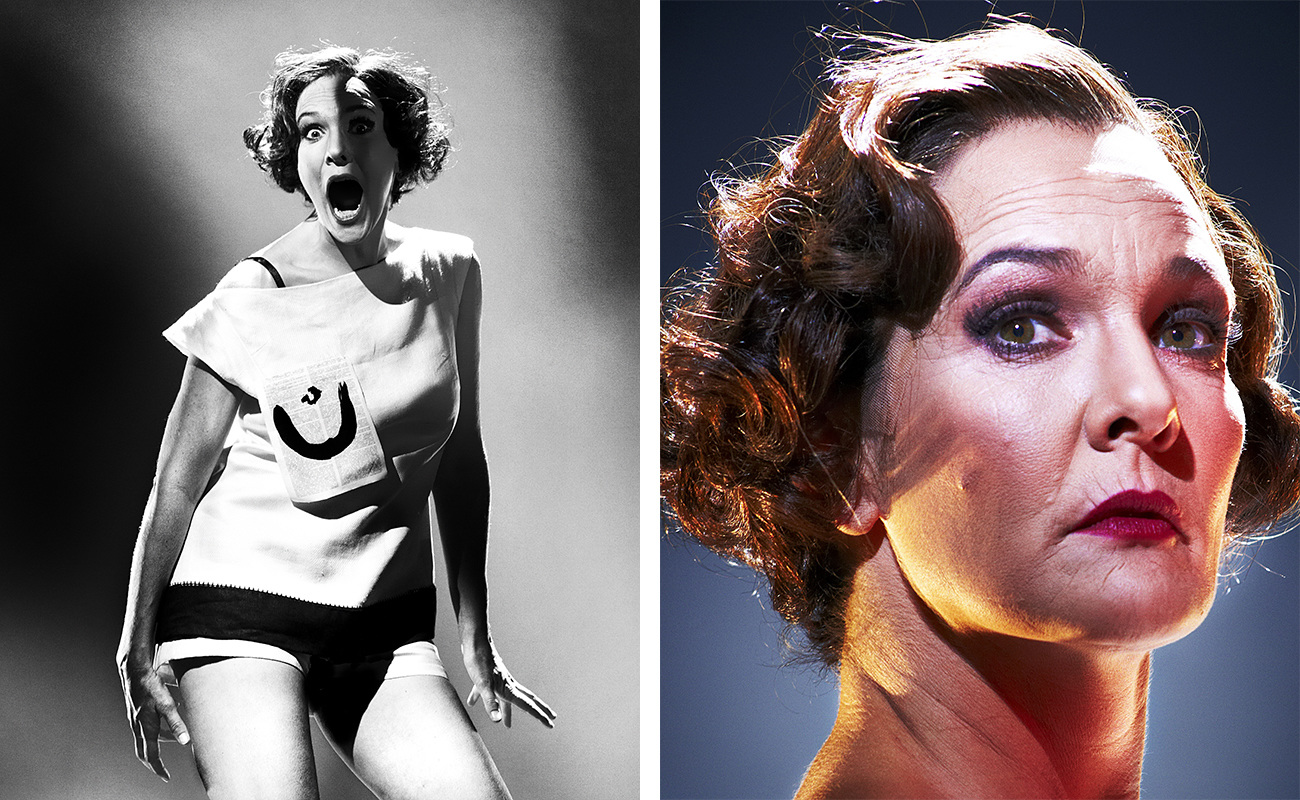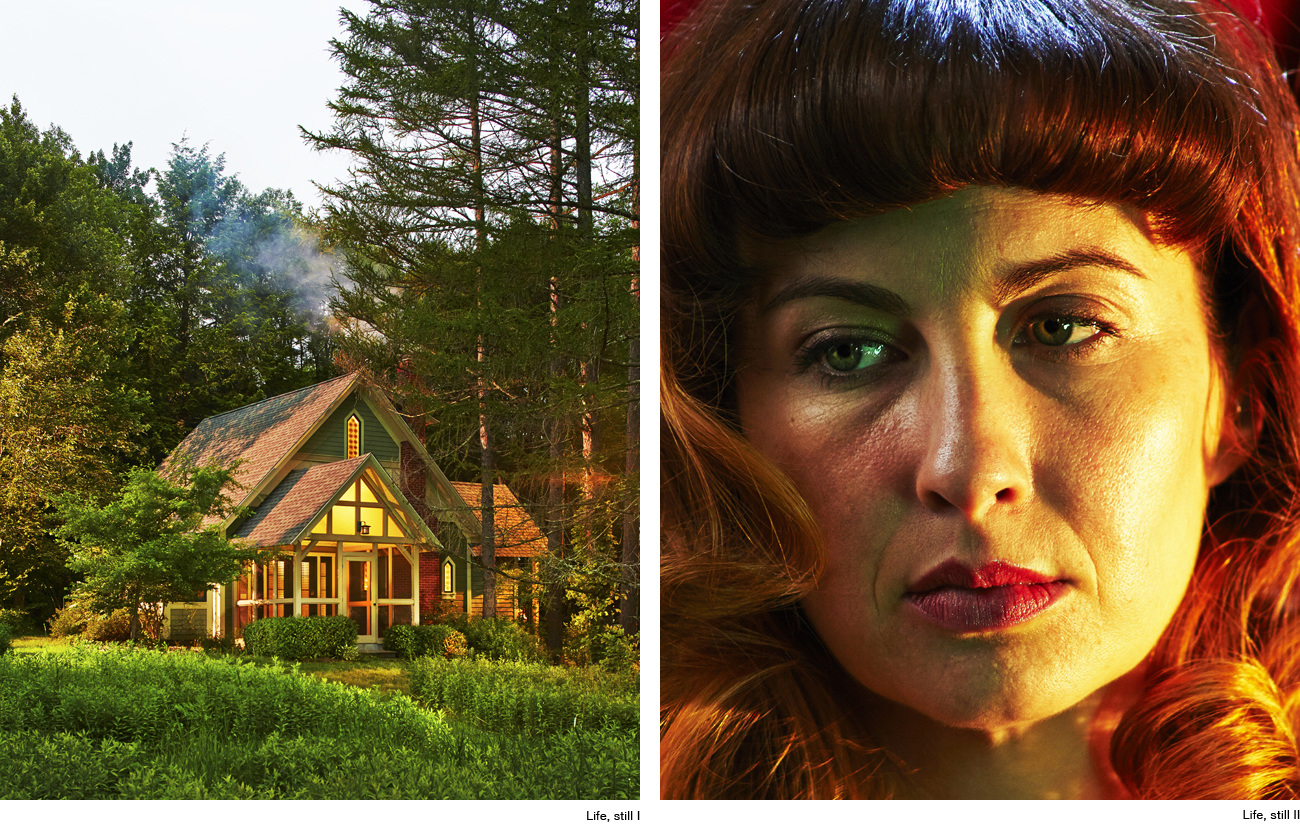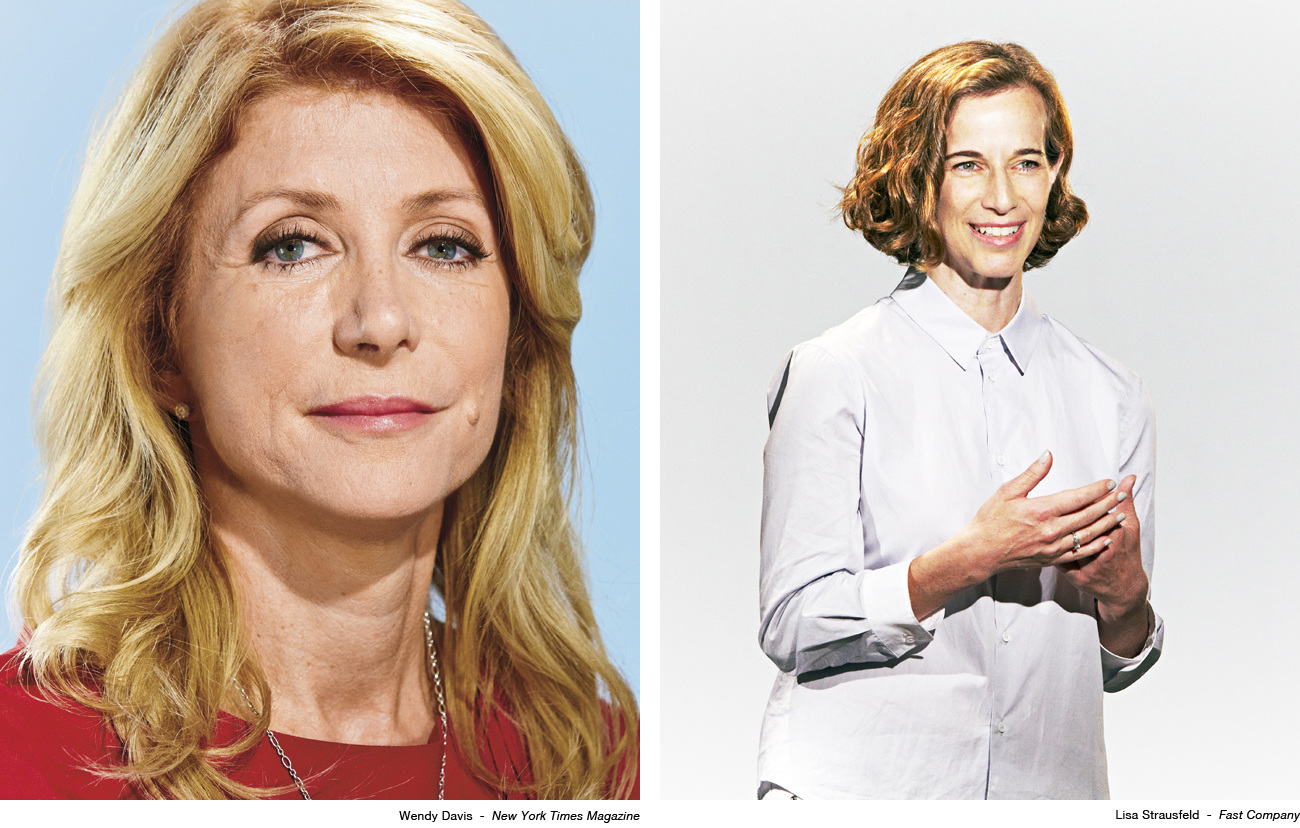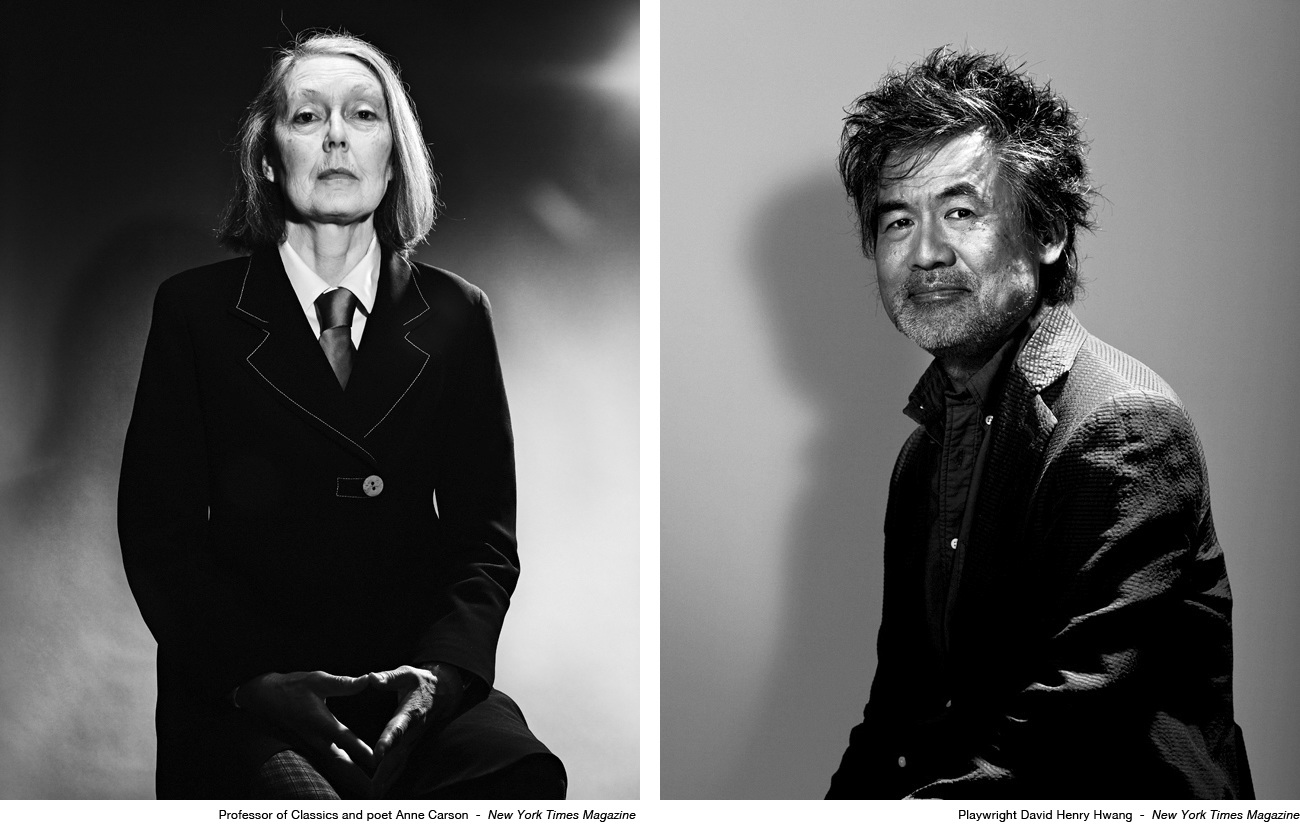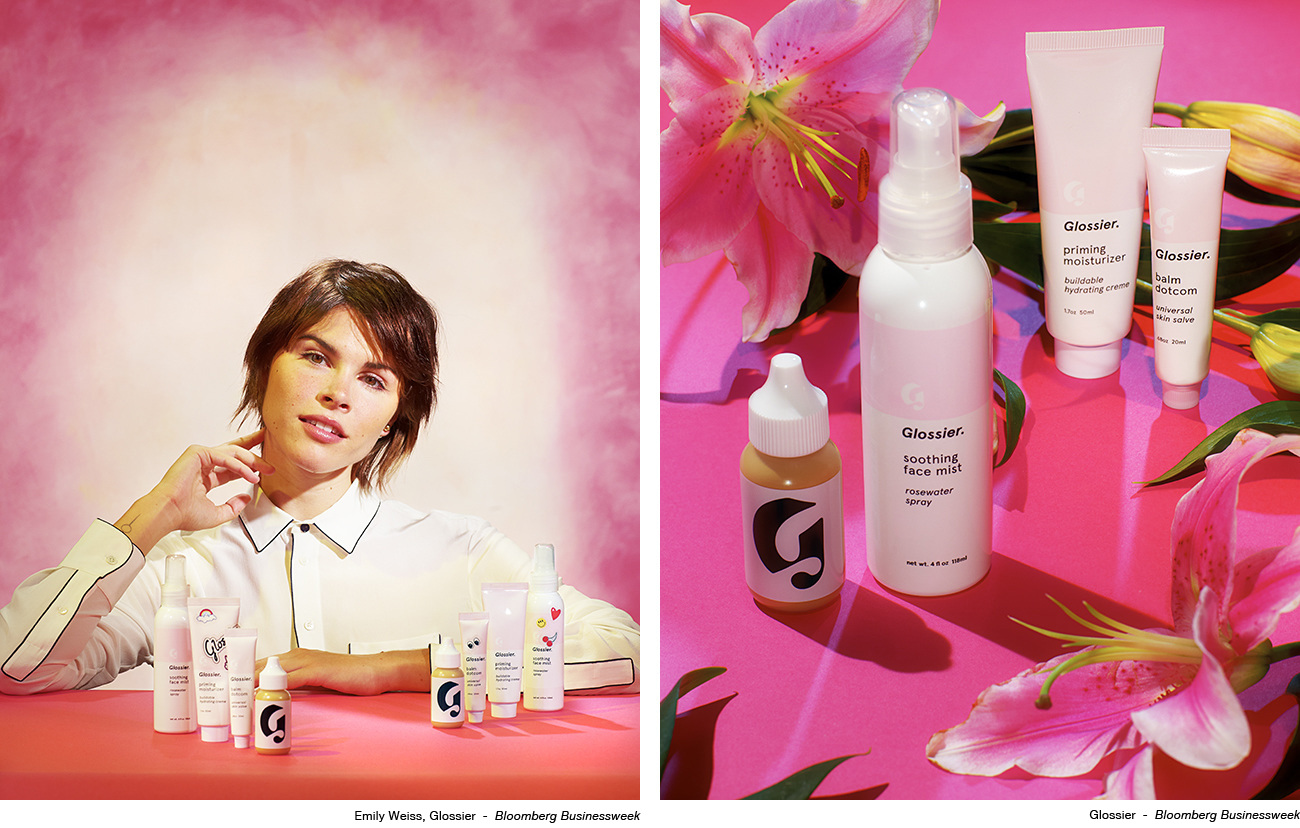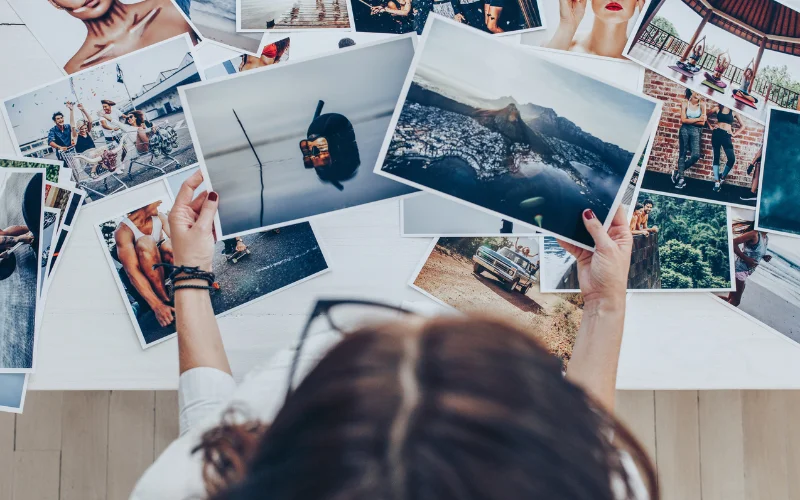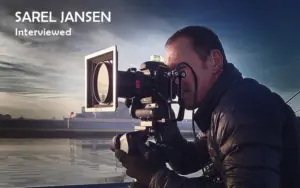Some photographers use light as a means to an end. Others like Jeff Brown perform with it. What may overwhelm somebody with an ineffectual sense of light’s fantastic, potent power seems to excite Brown. Constantly risking absurdity, he performs a high-wire act of vision, adding what may be three or four lights at any given time.
Many of the people Brown photographs are rich and famous, important and pretty, or all four and then some. They live their lives publicly. And they have public images to uphold. It’s no wonder why, when sitting for a portrait commissioned by a magazine or a newspaper, they perform a rehearsed self. But what’s going on in the portrait of Mitch McConnell above? Does Brown realize he’s illuminated the Senator from Kentucky down to the bone? Captured him as he is at the moment of a portrait: actor playing politician in what looks like a semi-ordinary grocery store, set in a fictional Kentucky town, where beer and sandwiches and pig-stuff are bought and sold.
While other portraits read as a profile of a person—capturing what’s simply given—Brown’s portraits wink at you, tipping you off that something else is happening. Because of the ridiculously energetic way he plays with light, color, and shadow, he creates portraits that somehow, someway feel more honest. They’re naked. Though not bare. You know you’re looking at a portrait made in the act. It’s as if you’re getting both the final photograph and a behind-the-scenes sketch. And if reality is increasingly judged by appearances, why can’t the truest portrait be the one that’s commissioned, rehearsed, and performed?
I spoke to Brown over email about his work and about his thoughts on photography.
Let’s start with a few questions about your thoughts on photography. Are you comfortable with photography? I don’t mean comfortable with your ability to shoot it. I mean, do you ever find yourself wondering about its strangeness? Does it ever trip you out?
If you measure photography up to any other thing in this world, it’s not weird at all, I think. I suppose weirdness can be found since it’s an art open to interpretation without a rubric for what’s good or bad. But I listen to people talk about anything, and I suppose that most things are open to interpretation, so my final answer will be, photography is no stranger than life.
How did you get your start in photography? Do you remember what it felt like at the beginning, at the threshold of new ways of seeing?
A friend wanted a camera for snowboarding, so I decided I wanted a camera for skateboarding. I signed up for a beginning black-and-white photography course at a community college. The day before we developed our first roll of film I saw part of “Basquiat” on HBO. I decided I should take an artistic approach to photography, and I’d also just read about double exposures. I got small pad of paper and a pen. There were some roses out front of my grandparents house. Some dead, some not. I wrote recompose on one sheet of paper and decompose on another. Went outside with the camera and the paper and one frame was a rose on the bush with recompose and a dead rose on the ground with decompose. I thought that was some hot shit. Well, the class didn’t have enough resources for the students to develop their own rolls of film, so we had to partner up and my partner was a great stoner but not a great first-time film developer. The development was under done, and the contact sheet of “artistic” furniture/backyard photography turned out more like apparitions. Thankfully, my job now is a little less apparisitic.
Looking through a camera lens for the first time with serious intent was exciting. Still looking through the lens is fun. Makes me think of a Winogrand saying, “It’s about how that thing looks photographed.” When looking through the lens, things don’t look as they look through your eyeballs.
Did you ever feel like giving up? Were you ever unsure of your talents?
A year or so after my first national assignment, I wondered whether I was good enough or if I was just winging it and had no clue what I was up to, but I knew I was working for people I’d only dreamed of, and I never had a dream come true moment, so the excitement was unsettling, I suppose. I know I’m still very much an infant in this business, but I feel as though I belong now. Still, I often ponder my worth to photography, and I hope that never changes.
You’ve said that inspiration for some of your photographs comes from the gut. What does the “gut” mean to you? How do you know when an idea originates from there? Can it always be trusted? If so, how does this part of you seem to have a fixed anchor in what’s right?
Let me reset my definition. Sounds like I was trying to be original. Ideas originate from everything and nothing. Or maybe, recompose, decompose; or construction, destruction. I’m inspired by things I don’t like as much as things I do like. I was on a film set and saw a loaf of bread next to butter, and I came up with an idea to have a woman buttering bread while holding a lit long cigarette wrongly in her fingers. After that popped into my head, I wondered if I wasn’t on a film set would I have thought of that. Circumstance, situation, dreams, conversation, reading, bars. . . As for gut, I believe one should always trust one’s gut. Gut is instinct, intuition, and experience.
I read that you’re a William Eggleston fan. Looking at your use of color, I also wanted to bring up Jimmy DeSana. Does his work influence yours? Would you say you share his eye for using warm colors to add an undercurrent of angst in your portraits?
I haven’t heard of Jimmy DeSana. Angst seems to be the overcurrent in his work. I’m glad you compared us. I would never have thought of it if I did know him but to be compared with such visceral work is a compliment. My interest in warmth goes back to Eggleston. Dan Winters has an awesome portrait of Eggleston. The richness and warmth in his prints. Perfection. Also, I love Norman Rockwell. Skintone cold makes me think of death and discomfort.
I like imagining good portrait photographers as deeply sensitive, empathetic souls who just know other people’s feelings. They can read the subtlest change of emotion in the tiniest of expressions. Would you consider yourself good at reading people’s emotions? Have you ever thought that you might see qualities or attributes (a story?) that somebody might not see in themselves?
I would say I’m a decent reader of emotions. Terrible reader of emoticons. I think I’ve lost friends over my disdain for emoticons. But I use them now. I like Santa’s head and the revolver together. Eyes tell the whole story. I could say with a certain degree of confidence that I know where a person is at at any given moment, but as far as pulling a story a particular person may have which they themself are unaware of is dubious. Most portrait sessions with a person you have no intimate knowledge of are fleeting. I don’t know. Some people show more than others. I few things have popped into my head. But I’d hate to say I knew something and find out I didn’t. Also, I know my mind likes to create stories. Sorry, that might not be too definitive.
I love your portrait of Anne Carson (left). I’m a huge fan of hers. She’s the poet I most recommend to people who are uncertain about poetry. You talk about meeting her and it being special. You hint at there being something otherworldly about her. Could you please talk about this moment? Did her presence influence how you photographed her?
Thank you. Anne Carson had an undeniable presence. Confident, stoic, curious. At one point during the shoot, we were looking at the screen when we saw something we all liked, and I asked her to recreate the pose. While she was adjusting her face she asked where her chin was. I told her it was under her chin. She kind of smiled. I wonder how I would have felt about the experience had I not read Autobiography of Red before I met her. I wonder if it would have been the same. I’m not sure how to describe her writing. Easy and incisive? I remember being 33 pages into the book and feeling like I should go outside and make something of my life.
All images © Jeff Brown. See more Jeff Brown photography work here.

